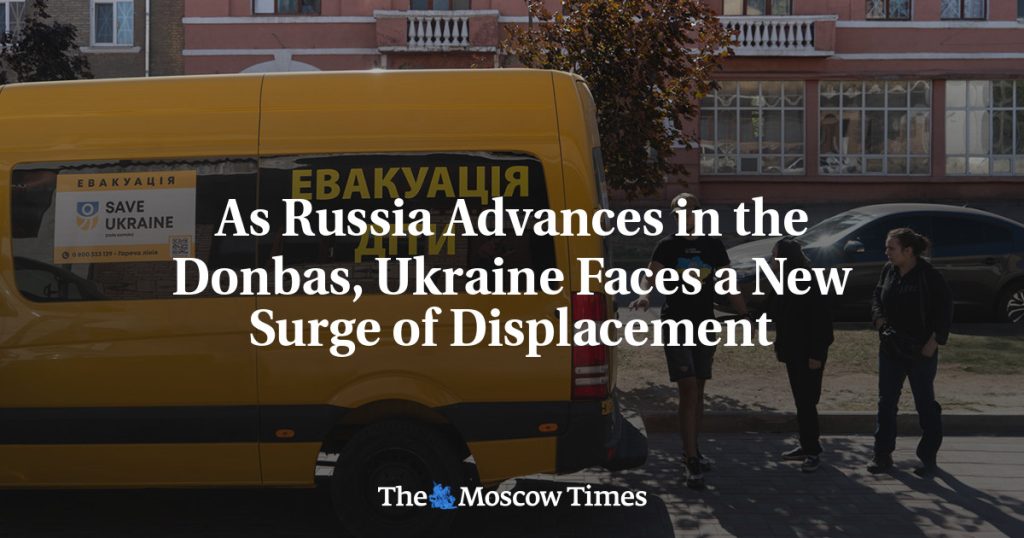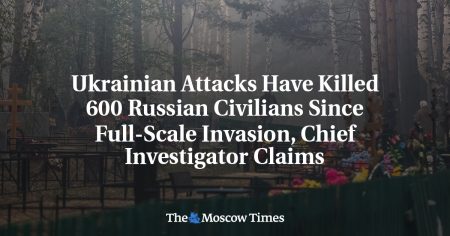In Kramatorsk, Ukraine, the city remains under Ukrainian control and serves as a key logistical hub. The city’s Protestant pastors, like Evgueny, have transformed their church into a refugee center, providing shelter for those fleeing the ongoing conflict. With Russian forces intensifying their efforts in the region, the number of refugees seeking shelter in Kramatorsk has increased significantly. The pastor explains that they are receiving between 20 to 30 people per day from nearby towns like Chasiv Yar, Druzhkivka, and Kostiantynivka.
One such refugee is Iryna, a woman in her 50s who fled from her parents’ farm in Chasiv Yar. She waited until the last minute to leave due to family responsibilities and financial constraints. Iryna shares the harrowing experience of witnessing their farm being bombed by the Russians, resulting in the death of their cows and the subsequent passing of her mother. Now, with no family or resources, she is uncertain about the future but hopes to be relocated to a center for internally displaced persons. Financial aid from the Ukrainian state, though limited, will offer her some support in meeting her basic needs.
The church in Kramatorsk, supported by funds from international organizations, tries to assist the displaced people financially. However, the resources are often insufficient to cover all the needs of the growing number of refugees seeking shelter in the city. Aid worker Philippe Jacob, who operates in villages around Pokrovsk, witnesses the gradual advance of Russian forces in the region. He shares the challenges faced by residents who are reluctant to leave their homes despite the escalating conflict, especially the elderly and sick who have limited resources for evacuation.
The dangers faced by aid workers like Philippe are highlighted by the increasing vulnerability to Russian attacks, with one of his colleagues losing his life during an evacuation mission. Russian drones have become more sophisticated, making it difficult for the jamming systems to counter their attacks effectively. Despite the risks, aid workers continue their missions to rescue civilians stranded in conflict zones, relying on armored vehicles for protection. The escalating violence and deteriorating situation raise concerns about the sustainability of their operations and the safety of both aid workers and refugees.
For families like Oxana’s, who fled from Kostiantynivka to Kramatorsk, the decision to leave their homes was prompted by the relentless bombings and proximity to the front lines. A traumatic incident at a local market further reinforced their decision to seek safety in the Ukrainian capital, Kyiv. While the children express hopes for a better future in a new environment, their mother, facing uncertainty as a recent divorcee, finds solace in faith and prayers for guidance. The challenges of starting anew in a different city, without a stable job or support network, add to the uncertainties faced by families displaced by the conflict.
The stories of refugees like Iryna, Oxana, and their families shed light on the human cost of the ongoing conflict in eastern Ukraine. As Russian forces continue to advance, displacing civilians and disrupting livelihoods, the need for humanitarian aid and support for those affected by the conflict becomes increasingly urgent. The courage and resilience of individuals like Evgueny, Philippe, and other aid workers who risk their lives to assist those in need serve as a testament to the enduring spirit of hope and compassion in the face of adversity. Despite the challenges and uncertainties, the community in Kramatorsk remains committed to providing refuge and assistance to those fleeing the violence, offering a flicker of hope in the midst of turmoil.















